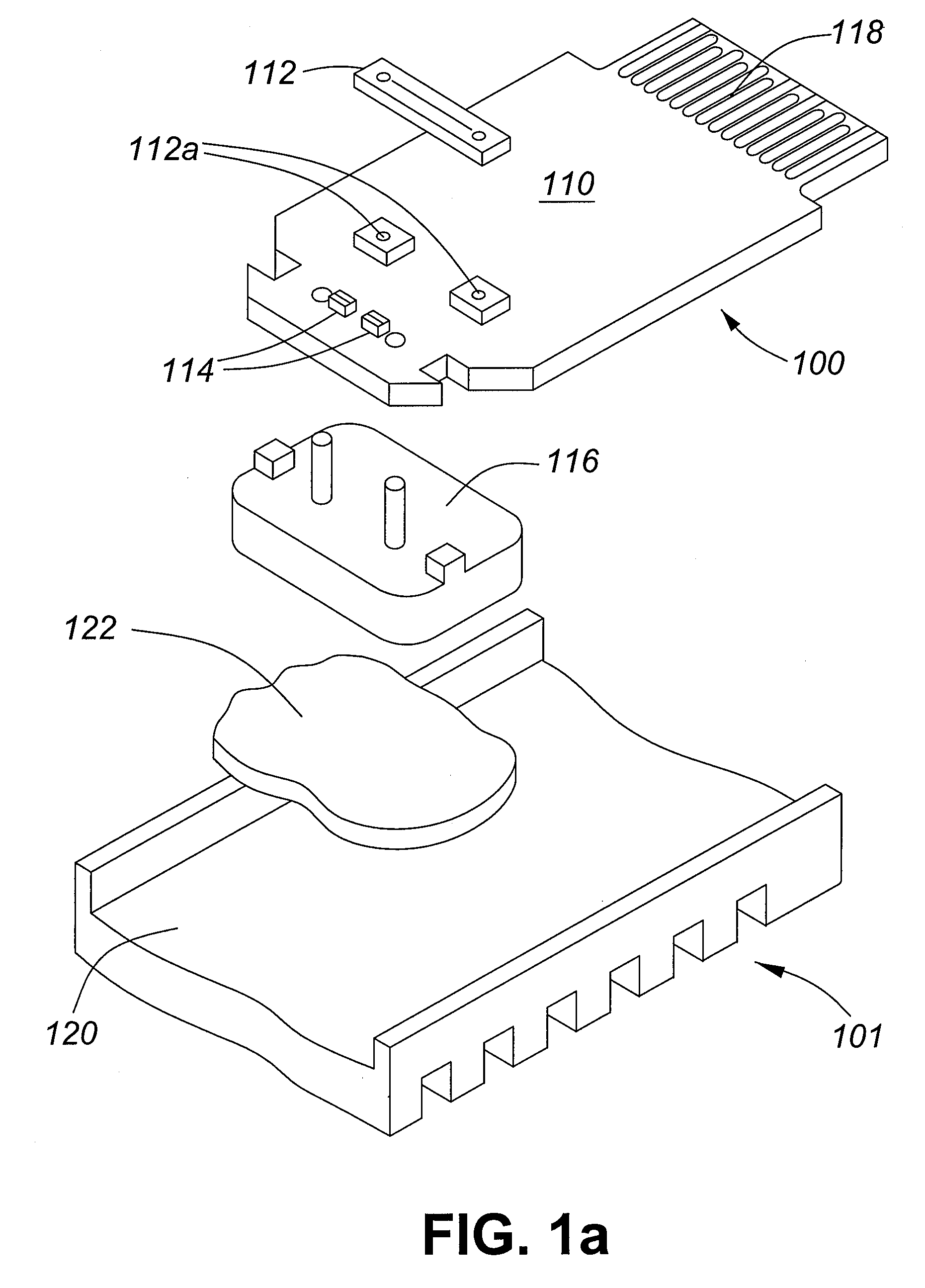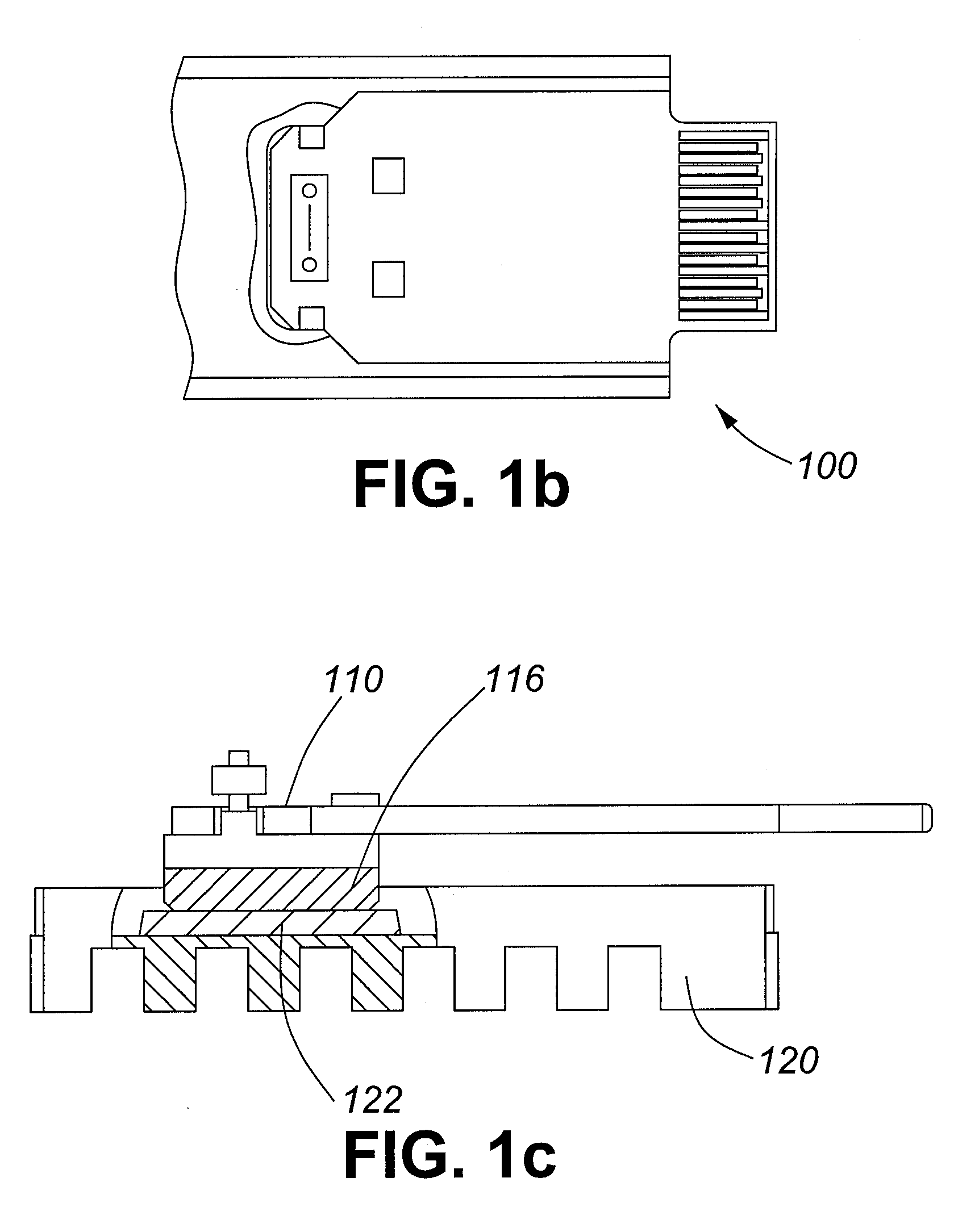Fiber optic cable assembly for optical transceiver
a technology of fiber optic cables and optical transceivers, applied in the field of fiber optic transceivers, can solve the problems of mechanical damage to optical systems, extremely fragile fiber pigtails, and difficulty in adjusting the pigtail, and achieve the effect of reducing the effect of errors
- Summary
- Abstract
- Description
- Claims
- Application Information
AI Technical Summary
Benefits of technology
Problems solved by technology
Method used
Image
Examples
Embodiment Construction
[0036]Referring to FIGS. 1a, 1b and 1c, there is provided optical device 101 in accordance with the teachings of this invention. The optics of the optical device are packaged in a unitary structure referred to herein as the optical sub-assembly 100, in which all optical alignments are contained. The optics may include, for example, lens 112, driver circuitry 112a, and optical die 114.
[0037]The optical sub-assembly 100 is placed on a printed circuit board (PCB) 110. The optics of the optical sub-assembly 100 may be passively aligned to the PCB 110 with use of mechanical features integrated in a heat sink carrier 116, as described in more detail below in conjunction with FIGS. 2a, 2b and 2c. The PCB 110 and mounted optical sub-assembly 100 are then mounted in an external carrier 120. The combination of the optical sub-assembly 100, PCB 110 and external carrier 120 collectively form optical device 101.
[0038]The PCB 110 may further include a male electrical connector 118 mounted thereon...
PUM
 Login to View More
Login to View More Abstract
Description
Claims
Application Information
 Login to View More
Login to View More - R&D
- Intellectual Property
- Life Sciences
- Materials
- Tech Scout
- Unparalleled Data Quality
- Higher Quality Content
- 60% Fewer Hallucinations
Browse by: Latest US Patents, China's latest patents, Technical Efficacy Thesaurus, Application Domain, Technology Topic, Popular Technical Reports.
© 2025 PatSnap. All rights reserved.Legal|Privacy policy|Modern Slavery Act Transparency Statement|Sitemap|About US| Contact US: help@patsnap.com



